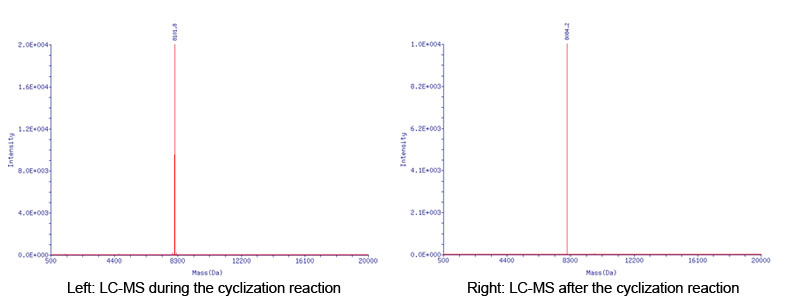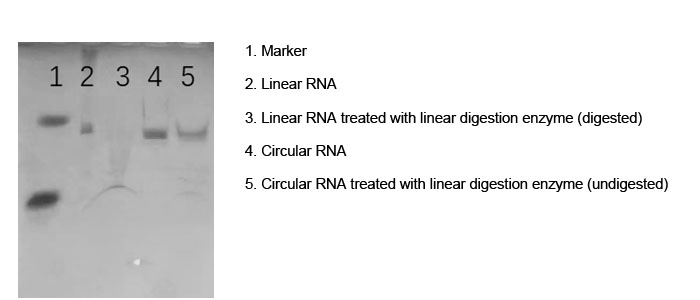circRNA Synthesis

Circular RNA (circRNA) have emerged as versatile molecules with a wide range of potential applications in biomedical research and therapeutics. They can act as miRNA sponges, regulate gene expression, and even be used for protein replacement, diagnostics, and vaccine development. Their unique properties and versatility make them a compelling area of research for the future of RNA-based therapies.
Unlock precision in RNA research with our advanced circRNA synthesis services. Leveraging dual-platform technology, we deliver tailored circular RNA solutions for diverse applications—from functional fragment screening to therapeutic development.
Key Features
• Dual-platform synergy: Combine chemical precision with enzymatic scalability for unmatched versatility in circular RNA design.
• Chemical Synthesis Platform: Specializing in short circRNA segments (≤100 nt), we offer high-purity, high-yield, and fast-turnaround synthesis, ideal for miRNA sponges and functional fragment screening.
• In vitro transcription (IVT) Platform: Designed for efficient synthesis of long circRNA (≥200 nt), suitable for functional studies and drug development.
• End-to-end expertise: From sequence optimization to QC validation, our team ensures synthesis success with ISO-certified workflows.
Applications
1. Gene regulation and miRNA sponges
2. Protein and peptide therapeutics
3. Vaccine development: mRNA vaccines and antigen delivery
4. diagnostics and biomarkers
5. RNA therapeutics and drug delivery
Elevate your RNA research with circRNA synthesis engineered for innovation. Please click the button on the right side and login to your account to request a quote and receive a personalized quote within 24 hours.
Service Options
| Service | Length | Turnaround Time | Price |
| Custom circRNA Synthesis | ≤60 nt | 6-10 business days | Quote |
| 61-100 nt | 8-12 business days | Quote | |
| IVT circRNA | >200 nt | 10-15 business days | Quote |
Case Study
circRNA synthesis: Synthesize 25 nt RNA oligo, and connect the 5' phosphate end of the single-stranded RNA to the 3' hydroxyl end through ligase to form a circular structure.

Figure 1. The target molecular weight before and after cyclization differs by 17.6, which is consistent with the characteristics of linearized RNA cyclization. When linearized RNA undergoes cyclization, a new phosphodiester bond is formed, accompanied by the elimination of one water molecule. This process leads to a reduction in molecular weight by 18.

Figure 2. The cyclization of RNA was verified through the use of a linear RNA digestion enzyme. Linear and circular RNA fragments of identical size were subjected to treatment with the linear digestion enzyme. Notably, the linear RNA was completely digested, whereas the circular RNA remained largely intact, demonstrating no significant structural alteration.



